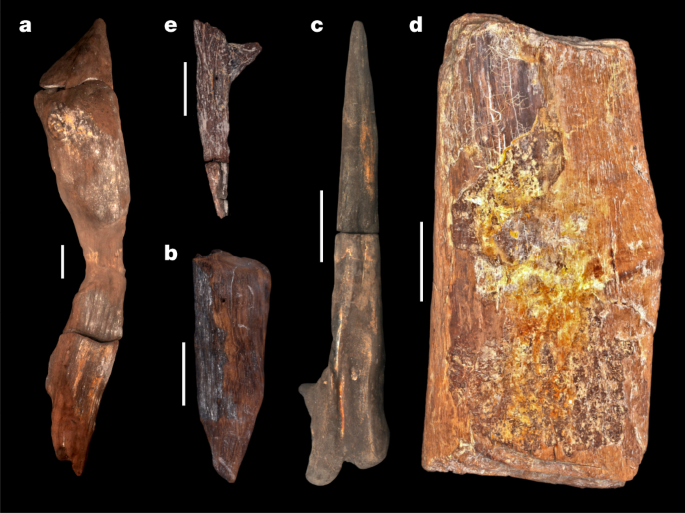Our ancestors were using complex tools and woodworking approaches almost half a million years ago
Nature reports that, at the Kalambo Falls archaeological site in Zambia, researchers have unearthed the earliest known examples of woodworking — dating back at least 476,000 years. This is a significant find as it includes two logs interlocked by a hand-cut notch, a method previously unseen in early human history. The discovery also features four other wood tools: a wedge, digging stick, cut log, and a notched branch. These artifacts demonstrate early humans' advanced skills in shaping wood for various purposes, challenging the traditional view that early hominins primarily used stone tools.
I’ve also never heard of the approach that the team used: luminescence dating. This is a method that helps determine when the wood was last exposed to light, and various wood analysis techniques.
The findings, especially the interlocked logs, suggest that early humans had the capability to construct large structures and manipulate wood in complex ways. It’s a groundbreaking discovery, as it not only pushes back the timeline of woodworking in Africa but also sheds new light on the cognitive abilities and technological diversity of our early ancestors. Amazing.

The Quaternary sequence is a 9-m-deep exposure above the Kalambo River (BLB1 is a geological section). Sediments are fluvial sands and gravels with occasional, discontinuous beds of fine sands, silts and clays with wood preserved in the lowermost 2 m.... A permanently elevated water table has preserved wood and plant remains (Supplementary Information Section 1). The depositional sequence is typical of a high- to moderate-energy sandbed river that underwent lateral migration. The sands are dominated by a lower unit of horizontal bedding and an upper unit of planar/trough cross-bedding. Upper and lower sand units are separated by fine sands, silts and clays with plant material deposited in still water after the river migrated/avulsed elsewhere in the floodplain. Wood is deposited in this environment either through anthropogenic emplacement, or naturally transported in the flow, and snagged on sand bedforms.Source: Evidence for the earliest structural use of wood at least 476,000 years ago | Nature[…]
Sixteen samples for dating were collected at Site BLB by hammering opaque plastic tubes into the sediment. A combination of field gamma spectrometry, laboratory alpha and beta counting and geochemical analyses were used to determine radionuclide content, and the dose rate and age calculator42 was used to calculate radiation dose rate. Sand-sized grains (approximately 150 to 250 µm in diameter) of quartz and potassium-rich feldspar were isolated under red-light conditions for luminescence measurements and measured on Risø TL/OSL instruments using single-aliquot regenerative dose protocols. Single-grain quartz OSL measurements dated sediments younger than around 60 kyr, but beyond this age the OSL signal was saturated. pIR IRSL measurements of aliquots consisting of around 50 grains of potassium-rich feldspars were able to provide ages for all samples collected. The pIR IRSL signal yielded an average value for anomalous fading of 1.46 ± 0.50% per decade. Where quartz OSL and feldspar pIR IRSL were applied to the same samples, the ages were consistent within uncertainties without needing to correct for anomalous fading. The conservative approach taken here has been to use ages without any correction for fading. If a fading correction had been applied then the ages for the wooden artefacts would be older.